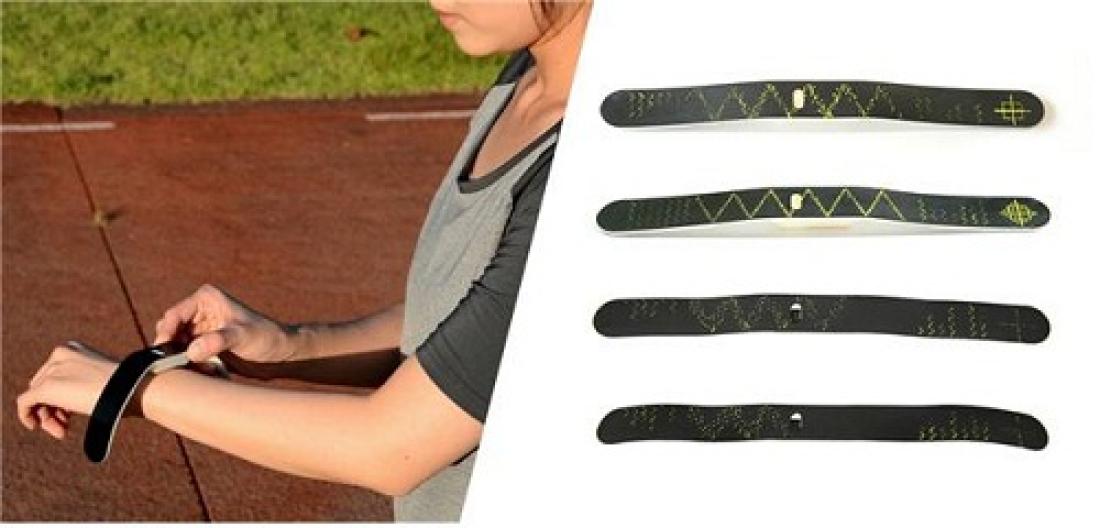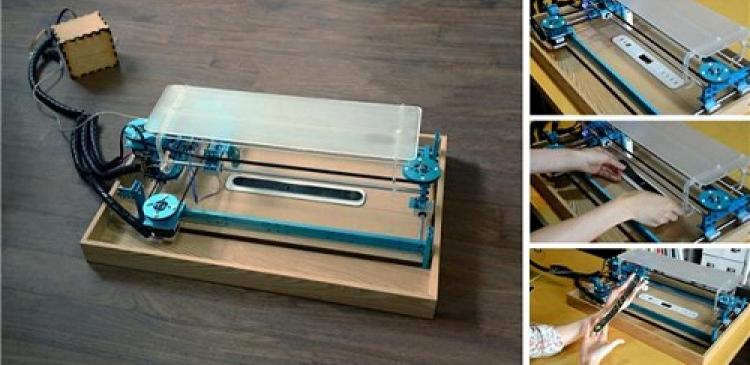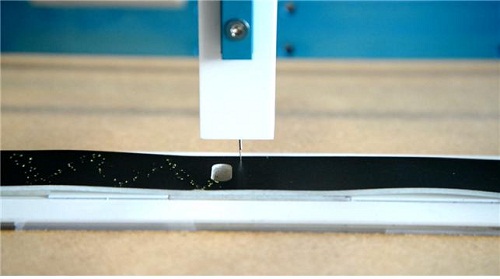Patina engraving system developed by KAIST research team
Professor Tek-Jin Nam’s research team of the Industrial Design Department of KAIST received the best paper award in the 2015 Association for Computing Machinery’s (ACM) Conference on Human Factors in Computing Systems (CHI) held from April 18 to 23, 2015. Consisting of a Ph.D. candidate, Moon-Hwan Lee, and a master’s student, Sejin Cha, the team was the first in Asia to receive the award.
The ACM CHI is the world’s premier conference in the field of Human-Computer Interaction (HCI), and this year’s event was hosted in Seoul, South Korea, which was the first conference in Asia in 33 years of conference history. The research team’s paper featuring “Patina Engraver: Visualizing Activity Logs as Patina in Fashionable Trackers” ranked in the top 1% of 2,000 submitted papers.
The research team developed Patina Engraver, an activity tracker, which monitors and tracks fitness-related metrics such as distance walked or run, calorie consumption, heartbeat, sleep quality, and blood pressure. The device is wirelessly connected to a computer or smartphone so that it can store and utilize long-term tracking data.
However, what Patina Engraver, a smart wristband, makes it distinct from other trackers is its function to display different design patterns based on users’ activity on the surface of the wristband. The research team took an idea to build this system from the fact that wearable electronics including activity trackers are not only utilized as health care devices, but also can be worn as fashion items to express emotions and personalities.
Equipped with an engraving feature, the charging pad or holder for Patina Engraver draws individualized patterns to reflect the user’s activities, such as walking or running, while the device is being charged thereon. Pattern display syncs with the frequency of usage, therefore, the more the tracker is used, the more patterns will show up.
According to the research team, since Patina Engraver provides users with a personalized illustration of their activity on the tracker, the users are more encouraged to put on the tracker and exercise.
Professor Nam said, “This research can be applied in producing other wearable devices to enhance users’ emotional satisfaction. When wearable technology is combined with design and emotion, the industry market will quickly expand.”





